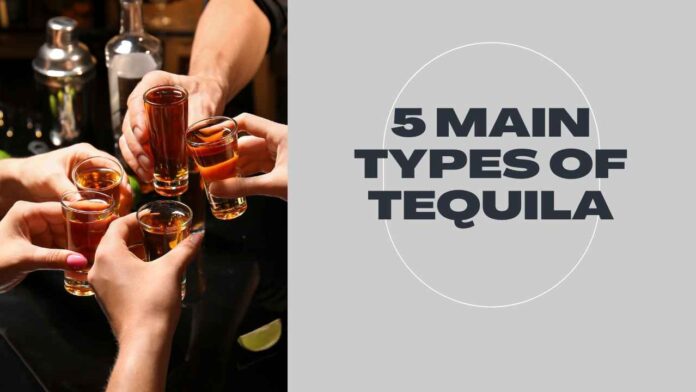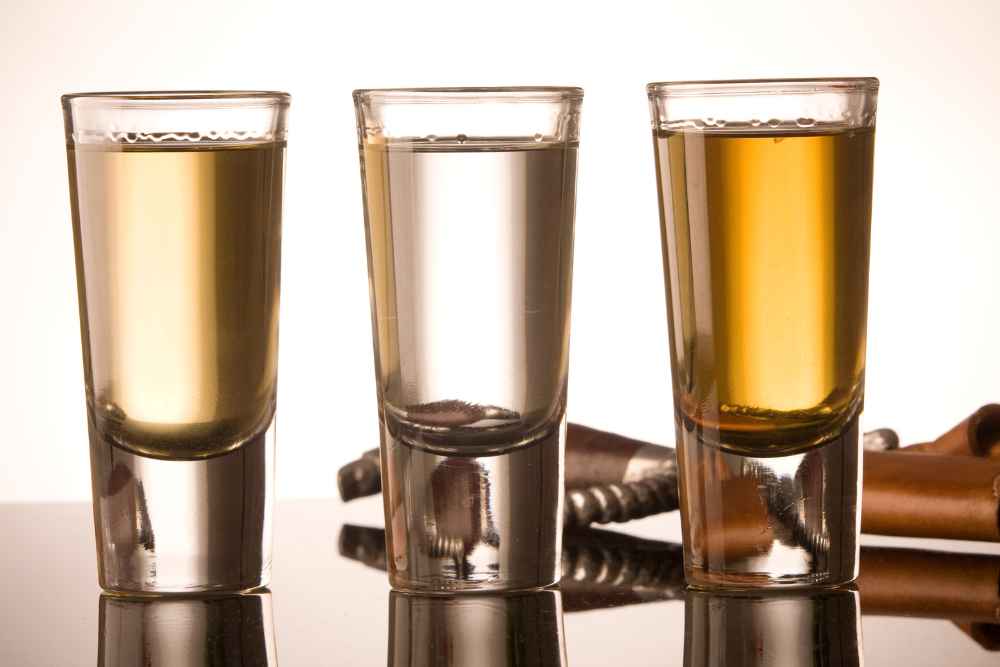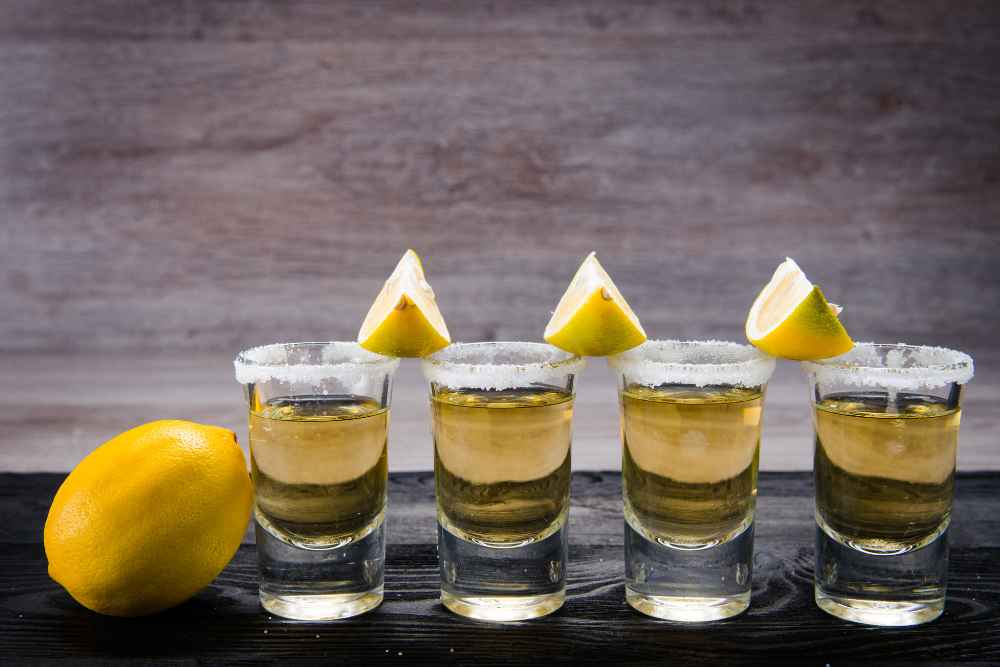This page may contain affiliate links. Please see our Disclaimer for more information. Always drink responsibly and adhere to your local legal drinking age.
Introduction
Tequila, the enchanting spirit originating from Mexico, has taken the world by storm with its distinctive flavors and rich history. But did you know there are five different types of tequila, each offering a unique taste experience? In this blog post, we will delve into these delicious varieties and explore how to appreciate their exceptional notes.
Whether you’re a seasoned connoisseur or new to the tequila scene, our guide is sure to elevate your next sipping session or cocktail party.
Key Takeaways:
- Tequila has five distinct types based on aging and flavor, ranging from unaged Blanco to ultra-aged Extra Añejo. Each type offers a unique taste experience for tequila connoisseurs.
- The terroir of the Blue Weber agave plant, sourced from highland or lowland regions in Mexico, can greatly affect the flavor profile of tequilas. Highland tequilas tend to be sweeter and fruitier, while lowland varieties have a spicier, earthy character.
- To fully appreciate each type of tequila, use proper glassware like narrow glasses for blanco or snifters for añejo and tasting techniques like sipping and swishing before pairing with complementary foods such as ceviche or roasted meats.
Understanding Tequila: History And Production
Tequila’s rich history dates back to the 16th century when Spanish conquistadors introduced distillation techniques to Mexico. The native Aztecs had already been fermenting the sap of the blue Weber agave plant, known as “aguamiel,” long before their arrival.
Once blended with European influences, tequila was born.
At the heart of tequila production is the precious blue Weber agave plant (Agave tequilana). It takes about eight years for this extraordinary succulent to mature in nutrient-rich volcanic soil found mainly within Jalisco and a few surrounding states.
Expert farmers called “jimadores” carefully harvest these plants by hand, removing razor-sharp leaves to reveal a large core or “piña.” These piñas are then roasted in traditional stone ovens or modern autoclaves before being crushed to extract their sweet juice.
This juice undergoes fermentation (with some producers adding natural yeast strains), converting sugars into alcohol.
Following distillation, different types of tequilas emerge based on a set aging process using wooden barrels that impart flavors such as oak, vanilla notes, and honey-like sweetness.
Blanco or silver tequila remains unaged, while reposado spends two months up to one year maturing inside barrels; añejo is aged between one and three years – those aged beyond three years earn extra añejo status.
The Five Types Of Tequila
The five types of tequila are distinct in flavor and aging process. From the crisp and fresh taste of blanco to the rich and complex notes of extra añejo, each type offers a unique experience for tequila aficionados.
Blanco Or Silver Tequila
Diving into the world of tequila, Blanco, or Silver Tequila is a great starting point for cocktail drinkers to explore. This type of tequila is either unaged or aged for less than two months in stainless steel or neutral oak barrels, which allows the true essence of the Blue Weber agave plant to shine through.
Some notable examples include Patrón Silver, Espolón Blanco, and Casa Dragones Blanco – each offering distinct flavors that highlight their unique terroirs from various regions within Jalisco.
From highland tequilas showcasing bright fruit notes to lowland varieties boasting an earthier character, your palate will surely be delighted by the diverse range available in this category.
Joven Or Gold Tequila
Diving into the world of Joven or Gold Tequila, it’s essential to understand what sets it apart from other types. This unique variety is a blend of unaged Plata tequila mixed with aged or extra-aged tequilas, resulting in a rich and distinctive flavor profile.
Joven or Gold Tequila offers a delightful experience for cocktail drinkers who are eager to explore beyond the traditional Blanco options. Some popular brands include Casa Dragones Joven – a smooth sipper with hints of floral and citrus notes that elevate classic cocktails like Margaritas and Palomas.
As you venture further into this realm of golden-hued spirits, don’t forget to keep an eye on quality – using tools like tequila Matchmaker ensures that you’re choosing 100% agave-enhanced drinks without unwanted additives.
Reposado Or Aged Tequila
Reposado tequila is a type of aged tequila that has been stored for at least two months but less than a year. During this time, the agave-forward flavor of the tequila mellows out and takes on some toasty vanilla notes from the oak barrels in which it’s aged.
Some popular examples of Reposado tequilas include Don Julio Reposado and Herradura Reposado, both of which are made with 100% Blue Weber agave and aged for just under a year in American oak barrels.
Añejo Or Extra Aged Tequila
Añejo tequila is aged for at least one year but no more than three years, giving it a distinct oaky flavor with hints of vanilla and caramel.
It’s recommended for whiskey or rum drinkers due to its smoothness and complexity. Extra añejo tequila takes aging to the next level by being aged for over three years in oak barrels.
This type of tequila has a dark amber color and a rich, full-bodied flavor with notes of toasted almonds, nuts, honey, and spices. While extra añejo tequila can be quite expensive due to the lengthy aging process, there are affordable options available, like Don Julio 1942 or Clase Azul Tequila Ultra, that offer exceptional quality without breaking the bank.
Extra Añejo Or Ultra Aged Tequila
Extra añejo tequila, also known as ultra-aged tequila, is a type of tequila that has been aged in oak barrels for at least three years. During this time, the tequila takes on complex and rich flavors similar to those found in aged whiskies and cognacs.
The additional aging process lends extra añejo, a mahogany shade with a smooth finish and notes of vanilla, toasted almonds, butterscotch, and honey. Brands like Don Julio 1942 or Clase Azul Tequila Ultra are excellent examples of extra premium añejo that can be enjoyed sipped on their own or used as an exceptional ingredient in cocktails.
Tequila Flavors: Highland Vs. Lowland
The flavor of tequila can be heavily influenced by where the Blue Weber agave plant is grown. Highland and lowland tequilas have different flavors due to the terroir of the agave plants used.
Highland tequilas, which are grown in mountainous areas with cooler climates, tend to have a sweeter and fruitier taste with herbal notes.
For example, Fortaleza Blanco Tequila is made using agave from the highlands of Jalisco and has notes of citrus and vanilla, while Cazadores Reposado comes from lowland agave plants that give it a spicy kick with peppery undertones.
No matter what type or brand you prefer, though, remember that 100% blue Weber agave should always be your go-to choice for quality spirits without additives or artificial sweeteners!
How To Appreciate Each Type Of Tequila
To fully appreciate each type of tequila, it’s important to use proper glassware, employ tasting techniques like sipping and swishing the tequila in your mouth, and pair it with complementary foods like citrus or spicy flavors.
Proper Glassware
Using the right glassware can enhance your tequila-tasting experience and help bring out its unique flavors. For Blanco or Silver Tequila, narrow glass or shot glass is recommended to focus on the agave-forward flavor.
Joven or Gold Tequila can be enjoyed in a similar type of glass, but some drinkers prefer it in a rocks glass with ice. Reposado or Aged Tequila should be sipped from a snifter or brandy-style glass.to capture the subtle oak and vanilla notes.
Añejo, or Extra Aged Tequila, is best served in a tulip-shaped glass, which concentrates the complex aromas and flavors that come from aging for several years.
Tasting Techniques
To fully appreciate each type of tequila, one needs to know how to taste it properly. Here are some tasting techniques:
- Start by observing the color and viscosity of the tequila in your glass.
- Swirl the tequila around the glass to release its aroma.
- Take a deep sniff of the tequila and identify any scents that stand out.
- Take a small sip, let it roll around your tongue, and swish it around your mouth before swallowing.
- Pay attention to the flavors that emerge – is it sweet, smoky, or spicy?
- Assess whether there is a lingering aftertaste – this can be an indication of quality.
- Sip water in between tastings to cleanse your palate and avoid mixing flavors.
Remember that everyone’s taste preferences are different, so don’t be afraid to trust your own judgment when trying different types of tequila. And if you’re new to tequila tasting, start with a blanco or reposado before working up to more aged varieties like añejo or extra añejo.
Food Pairings
Tequila can be a versatile drink that pairs well with various dishes. Here are some food pairing suggestions to try:
- Blanco tequila: Pair with ceviche, guacamole, and seafood tacos for a fresh and zesty combination.
- Reposado tequila: Match with grilled meats and roasted vegetables to complement the smoky notes of the tequila.
- Añejo tequila: Best paired with dark chocolate and desserts with rich flavors for a luxurious treat.
- Extra/Ultra Añejo tequila: Sip alongside smoked meats and cheeses for a bold flavor combination.
Remember to choose foods that won’t overpower the flavors of your chosen type of tequila. Also, consider the time of day when enjoying your drinks and pair them accordingly – margaritas during brunch or palomas in the afternoon are perfect options!
Tips For Choosing The Right Tequila For You
1. Determine your preferred taste – Before purchasing a tequila, consider what flavors you like.
2. Check the label – Tequila must be made from at least 51% blue agave to be considered authentic, but some brands may use additives and secondary spirits in their production process.
3. Consider aging classifications – Añejo tequilas are aged longer than blancos, leading to a mellowed-out flavor profile ideal for whiskey and rum lovers.
4. Experiment with food pairings – Certain foods can complement or contrast with various types of tequilas, enhancing your drinking experience.
5. Tequila is more complex than many people realize; there’s so much more beyond cheap shot glasses followed by licking salt from the hand!
This guide highlighting how different types taste better when consumed properly paired together will help drinkers get maximum enjoyment out of any bottle they choose based upon their preferences in flavor.
FAQ
What are the five types of tequila?
The five types of tequila include Blanco, Reposado, Añejo, Extra Añejo, and Joven or Gold Tequila. Each type has unique characteristics based on the aging process, ingredients used, and distillation methods.
How do I appreciate the unique flavors of different tequilas?
To appreciate the unique flavors of different tequilas, it is recommended to sip slowly and savor each mouthful while allowing time for the notes to develop on your palate fully. It’s also recommended to try not mixing with other beverages or adding garnishes that may mask the natural flavor profiles.
Can I mix different types of tequila together in a cocktail?
Yes, you can mix different types of tequila together in a cocktail. Still, it’s important to choose complementary flavors based on strength and taste profile so as not to overpower one another.
Should I store my tequila in a freezer or at room temperature?
It is generally recommended that higher quality aged Tequilas such as Reposados and Anejos be stored at room temperature while lower-end blends like Joven/Gold Tequilas can benefit from being chilled before serving, which helps mellow some harsher notes out upon consumption.
Storing all bottles upright to ensure consistent exposure between surfaces regardless of orientation helps protect against oxidation over long-term periods (i.e., months).
Conclusion
In conclusion, exploring the five types of tequila opens up a whole new world of flavors and appreciation for this distilled spirit. Understanding the different production processes, aging classifications, and flavor profiles can make all the difference in choosing which tequila to sip or mix into your next cocktail.
From blanco to extra añejo, each type offers unique characteristics that are worth savoring. So grab some proper glassware, use tasting techniques like Tequila Matchmaker‘s “Taste Select Repeat,” and pair it with appropriate foods for an unforgettable experience.





















